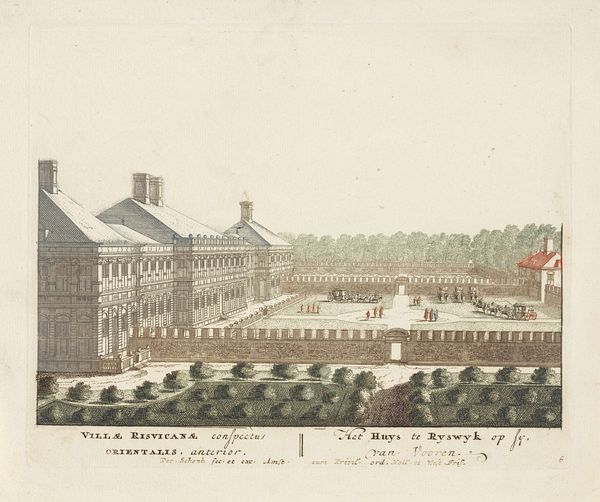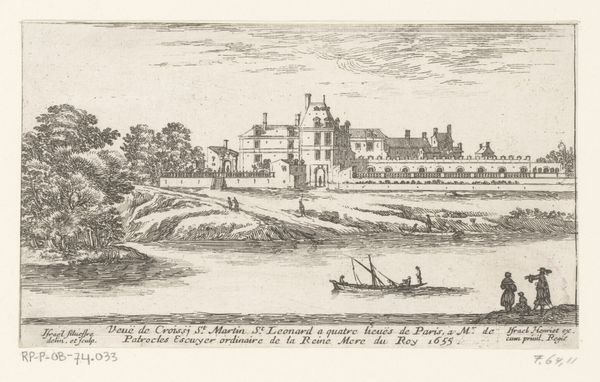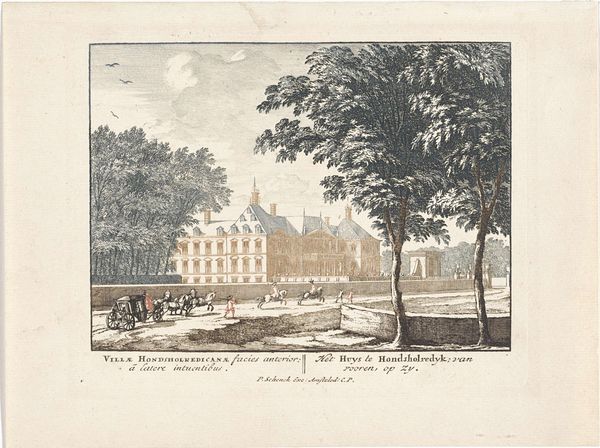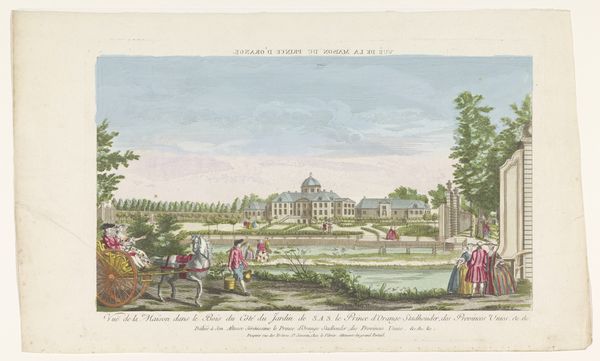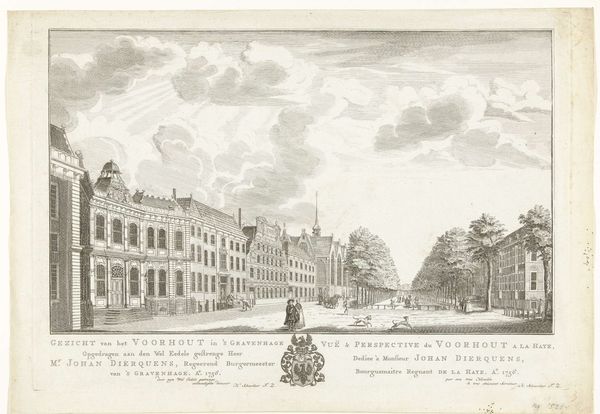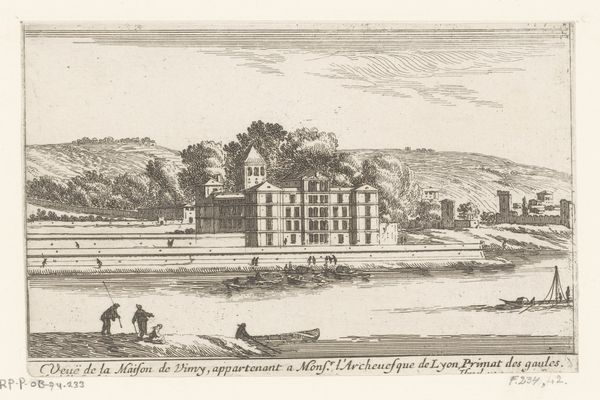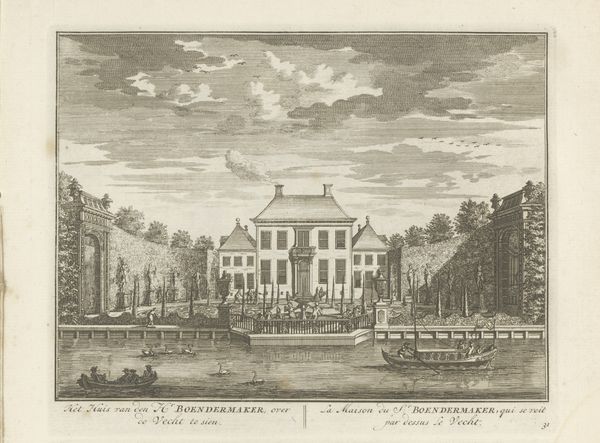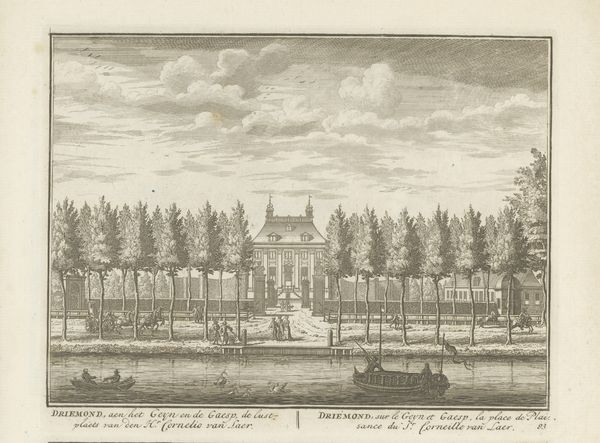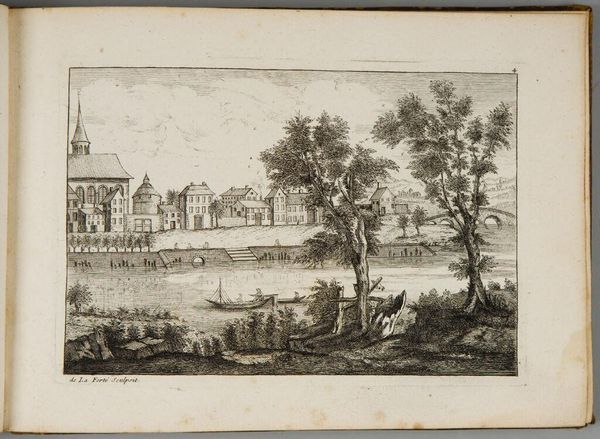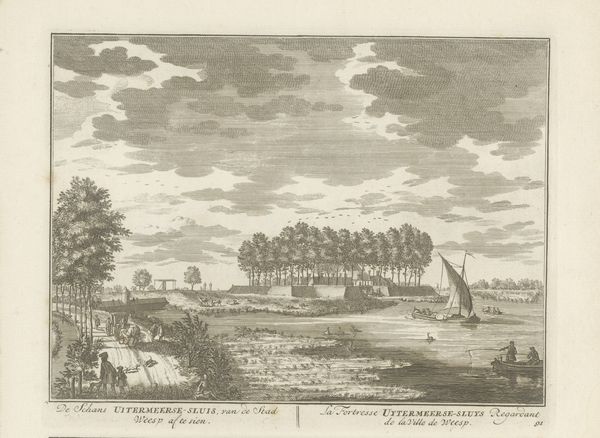
Gezicht vanuit de tuin op de achterzijde van Huis ter Nieuburch te Rijswijk 1697
0:00
0:00
pieterschenk
Rijksmuseum
print, engraving, architecture
#
baroque
#
dutch-golden-age
# print
#
landscape
#
cityscape
#
engraving
#
architecture
Dimensions: height 162 mm, width 198 mm
Copyright: Rijks Museum: Open Domain
Editor: This is Pieter Schenk’s 1697 engraving, "View from the Garden on the Back of Huis ter Nieuburch in Rijswijk." I’m really struck by the detail of the architecture, but it feels somewhat distant, almost like a stage set. What do you see in this piece? Curator: What immediately grabs my attention is the labor involved. Think about the process: Schenk, painstakingly etching lines into a metal plate, creating a matrix from which potentially hundreds of prints could be pulled. It’s a form of industrialized image production, connecting this aristocratic vista to the world of craft and trade in Amsterdam. Notice, too, the sharp delineation between the ordered, geometric forms of the palace and garden versus the textured density of the trees, that contrast almost reads as commentary on imposing human order onto the organic, even exploiting it for viewing pleasure. Does this read as pure admiration to you, or is Schenk inviting something else? Editor: I hadn't thought about that. So, you're saying the engraving process itself brings in a layer of meaning beyond just representing the house? Curator: Absolutely. Engraving wasn’t just a neutral means of documentation. It was a commercial process. These prints weren’t just for aesthetic enjoyment, they were also commodities reflecting power. Ask yourself, who was commissioning and consuming these images? Who benefited from these idealized representations of wealth and status? It makes us aware of the socioeconomic power and also the technology supporting the ruling class at the time. Editor: That’s a fascinating point. Seeing the image as part of the broader economy definitely changes how I understand it. Thank you! Curator: And thank you. Considering the material conditions of art production always reveals new dimensions.
Comments
No comments
Be the first to comment and join the conversation on the ultimate creative platform.
